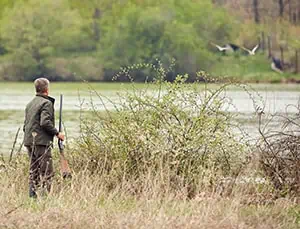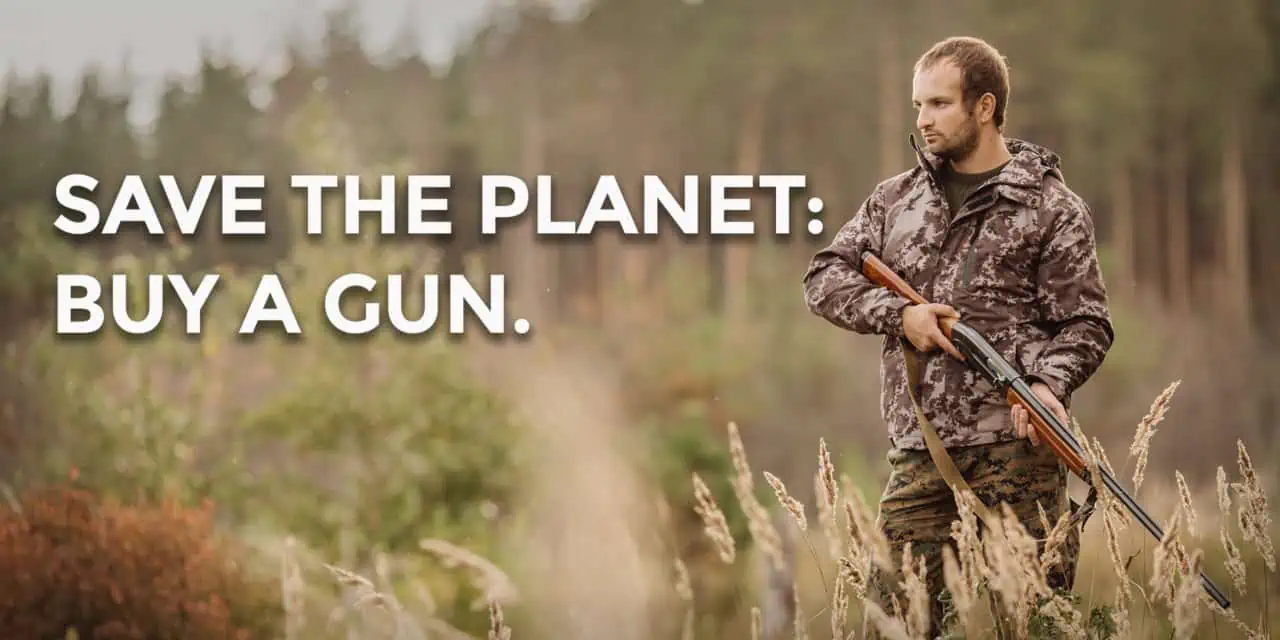What Is The Pittman Robertson Act?
In 1937, Congress passed an obscure piece of legislation which you’ve probably never heard of unless your job is to keep track of the finances of the company that’s in the gun business. The Federal Aid in Wildlife Restoration Act. also known as The Pittman-Roberston Act, was passed to help stem the decline of wildlife and natural spaces inside the United States and to create a system to fund wildlife management in the entire country.
The Act moved a pre-existing excise 11% excise tax on long guns (such as rifles and shotguns) and ammunition and a 10% excise tax on pistols that was going into the Treasury and gave it to the Secretary of the Interior to be distributed to the individual states for use in wildlife conservation. The ways that the states can use these funds are very well-defined. The Department of Interior designates funds based on state size and number of licensed hunters in the state, and then the states submit plans which detail how they will use their Pittman-Roberston funds. The states must pay the full cost up-front, and then they are reimbursed up to 75% from the Department of the Interior. All plans submitted by the state to be funded this way must be focused on the preservation and expansion of wildlife habitats, hunting and fishing education programs, and the construction and maintenance of shooting ranges and other outdoor education facilities.
The formula for how much each state receives has changed since 1937. Taxes on fishing gear and motor boats were added as a result of the Dingell-Johnson Sport Fish Restoration Act, and in the 1970’s, taxes on archery equipment were added in as well. All the money from these taxes was added to the available funds to the states, and that added up to a large amount of money being available to spend on preserving the beauty and the wildlife of America for future generations.
Big Bucks For Saving Bucks
How much money are we talking about? In 2018 alone, over $1.1 billion with a “B” dollars were allocated to state-level wildlife agencies to promote conservation efforts, hunter education, game and fish preservation, gun ranges and all the other things that make the great American outdoors so great.
The $1.1 billion paid for preservation of our wildlife by the use of the funds created by the Pittman-Robertson and Dingell-Johnson Acts far, far outweighs the amount spent for conservation and wildlife management by other non-profits. Greenpeace International, for instance, had a total operating expenditures of over $96 million dollars in 2017, and the Sierra Club spent just over $65 million that year as well. That means that American gun owners, hunters and fishermen contributed over six times the amount of money to conservation and preservation of America’s natural beauty than Greenpeace and the Sierra Club combined spent the previous year.

Who knew that saving wildlife could be so much fun?
The Sierra Club (and other wildlife organizations) acknowledge just how large of a contribution American gun owners make to conservation efforts. Gun owners, archers and fishermen are the driving force to preserving America’s outdoors, so when you buy those boxes of .30-06, you’re not only preparing for this year’s hunt, but future hunts as well. America’s gun owners lead the way in supporting our heritage of safe and fun outdoor recreation, and now, with the passage of the Target Practice and Marksmanship Training Support Act, that support can evolve as our country evolves.
Make Gun Ranges Great Again
The Target Practice and Marksmanship Training Support Act, passed with bipartisan support in both houses and recently signed into law by President Trump, makes it easier for state wildlife agencies to build public shooting ranges. Prior to the passage of this bill, states had to finance 25 percent of the cost of a public shooting range, and then the federal government would kick in the other 75 percent from Pittman-Robertson funds. Now, though, a state only needs to front 10 percent of the range cost and then can use federal dollars to pay for the rest, making it less expensive to build public ranges.
Changing Times Require Changes In Laws
This change in how ranges are built is important because the needs of American gun owners are changing as America itself changes. The primary drivers of today’s American gun culture isn’t hunting and fishing, it’s concealed carry, target shooting and competition. As America’s culture changes, gun culture changes as well, and while hunting is staging a bit of a comeback as of late, the fact is, more Americans are buying guns to take to the range than they are buying guns to take out into field. With the passage of the Target Practice and Marksmanship Training Support Act, that new reality is now reflected in how federal funds are distributed to the states, and that’s a good thing idea for the future of gun ownership in America.
For decades now, America’s gun owners have been the primary drivers of wildlife conservation and preservation of the outdoors for future generations. This commitment to preserving what’s important to us is at the heart of everything we hold dear about our lives and our environment. We have 1.1 billion reasons to be proud of what we do make this world a better place for our generation and generations to come, and we are leading the charge to keep this nation beautiful for years to come.


